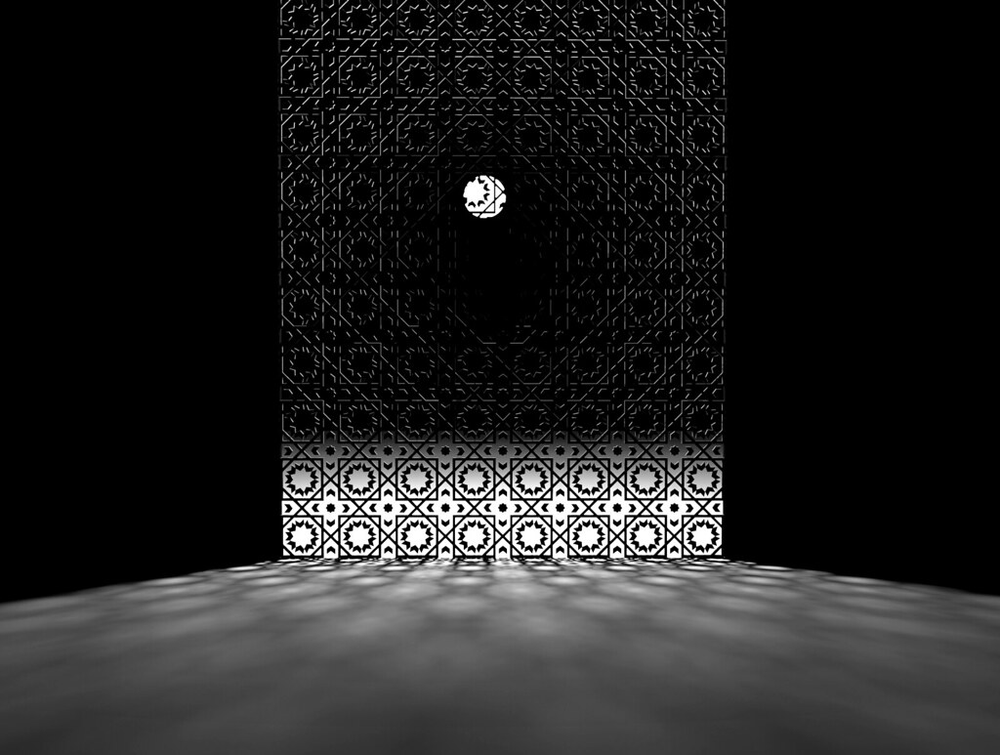You’re a woman in her early thirties, dressed nicely, and on the bus coming home from work. It’s about 7pm, and dusk is arriving. You take your usual seat on the bus and notice an unusual man sitting two rows away. He quickly looks away the moment you meet his eyes. You notice another man on his cell phone, who takes a break from scrolling to look down the aisle and visually lingers on your legs. You pull them a little closer in and put your sweater over your knees. Your heart rate is up. You have both the impulse to scan the rest of the bus for other men who might be untrustworthy, and the desire to look out the window to avoid contact. You look out the window, and feel yourself numb a bit.
Seven stops later, it is your turn to get off. The moment you step off the bus, you realize that the first unusual man got off the bus just behind you. You look back to see that he is following you. Perhaps he is just going the same way? Down the same goddamn street, and on the same side goddamn sidewalk? You pick up your pace. But you soon begin to doubt this acceleration because you know this street is less populated than the boulevard with the bus stop. You slow back down, but continue walking. You can see him with the eyes on the back of your head and feel him through the skin in your back.

Your street is four more blocks away, but you decide to turn off the street immediately; this way, if he follows you, you can head back to the busy part of town and get help. You turn left down a side street and the amount of streetlight decreases. Your heart pumps faster, an image of him choking you while he reaches for your waistline flashes in your mind and disappears just as quickly. You keep walking, anxiously waiting for him to catch up. He reaches the corner, and walks right by the side street, away from you. You stop walking, and a long, deep breath deflates in your lungs. You suddenly notice how wired your arms and legs are. You wait until you can no longer hear his footsteps, and then double back. You round the corner, and head home.
Vigilance in Everyday Life
Let me first take a moment to acknowledge that I am not a member of a socially marginalized group. Meaning: my race, gender, and sexual orientation do not put me at risk of social maltreatment. Therefore, I take a little PC risk in speaking from a woman’s perspective. In this case, I opt for the risk because it is useful for members of privileged groups to step inside the mindset of those less systematically fortunate. I speak about the woman on the bus for that exact purpose. I have spoken to many women who live just such a scenario, regularly.
We have research that has been clear for generations: we know that in most nations, women are twice as likely to feel unsafe walking home at night and 10% more likely to feel unsafe using public transportation. In a data analysis of 20 million police road “pullovers,” it was found that a black person is twice as likely to be pulled over as a white person and four times as likely to be searched, while ultimately 2% less likely to be discovered with illegal contraband. For people of marginalized populations, vigilance is an everyday part of life.
Trauma and Hypervigilance
Given my privileged place in society, I am not an expert on living with oppression. But I know a thing or two about trauma. For the purpose of this article, it will suffice to think of trauma as a nervous system alarm response to threat that never goes off. Each threat produces a complex psychophysiological drive with an impulse toward self-protection. When this drive is not realized and carried out—as is typically the case in traumatic events when one is overpowered—the psychophysiological drive remains on long after the event and traumatic symptoms begin. See this article for a more in-depth understanding of trauma.
Vigilance is a core aspect of most traumatic experiences, and a core symptom that lingers on when trauma is endured. Viewed through the trauma lens, which embraces the fact that we are all animals with a survival bias, vigilance can be seen as a heightened environmental acuity: an activated state of autonomic nervous system arousal that sharpens our focus, designed to locate potential threats. This focus is designed to be time-limited, as it is ultimately taxing to our body and mind.
In the case of marginalized populations, vigilance becomes very tricky. When we look at the way people in places of systemic power mistreat marginalized populations (oftentimes gruesomely, as we have seen of late), we can undoubtedly understand that some level of vigilance for these persons is healthy or even necessary for survival. The anxiety and vigilant thought process of the woman on the bus may have saved her life, if indeed that man had been a sexual predator.
This type of oppression-respondent vigilance is tricky for two reasons.
Trauma of Marginalization
The first is that all members of marginalized populations have endured some level of trauma from social oppression (many have endured individual event trauma and developmental trauma as well), which they bring with them into every new social experience with people in places of power. This can make it very unclear whether the vigilance is healthy or hyperactive and whether the continued trauma response is a result of actual threat or perceived threat (the amygdala cannot tell the difference).

The second reason is that the oppressive threat is ongoing. In Somatic Experiencing, we acknowledge that working with trauma from an ongoing threat can be far more challenging than those resulting from a past event with a clearly defined beginning and end. Current researchers, in an attempt to highlight the need for more research and clinical consideration, have even proposed a non-pathological clinical term, race-based traumatic stress, to highlight the research-backed trauma that occurs from constant micro-aggressions and social inequality.
So, marginalized people have healthy vigilance each time they go out their door, and they likely have hypervigilance left over from past traumatic events. This is a heart-wrenching bind. How can they learn to discern the two and resolve the hypervigilance? And how can society as a whole decrease the need for healthy vigilance?
Somatic Experiencing
The first question—discerning between hypervigilance and healthy vigilance—can be achieved using somatic therapy methods, such as Somatic Experiencing. The path would look something like this: we would begin by assessing the level of physiological arousal present related to past events that the client feels are most pertinent and related to their particular form of daily oppression. This may be a time of actual sexual predation or racist violence. While inviting the memory into the counseling office (or video chat in these days) in a slow, titrated way, we shift focus from the memory itself, to the present nervous system response to that memory. Any nervous system arousal in response to the memory is the trauma that makes discerning between hypervigilance and healthy vigilance challenging.
During this bodily recalling of the event, we may get clues indicating where the healthy impulse toward self-protection was thwarted at the time of the past event. A side-glancing eye may indicate the need for further environment orientation and scanning—as is often the case when the perpetrator sneaks up on the victim. A tense right arm might indicate a punch or shove that never got carried out because the victim was overpowered. Jumpy legs or retracted feet may indicate a flight plan that was not physically possible in the moment of attack. After locating such thwarted self-protective responses, we use more gentle techniques to carry out the motor sequences and relieve the physiologically charged burden associated with them.
Once this challenging and subtle process is carried out successfully (even a few times), the client goes back out into the world and we find out how much of their day-to-day vigilance is hyperactive and how much is healthy. The client may discover that they still feel afraid of strange men on the bus, but slightly less so. This would indicate some level of hypervigilance exists, and the somatic trauma work should be continued to see if the fear continually decreases. And the continuation of this work addresses the second question of how to relieve the hypervigilance. The more somatic awareness is built, and the more self-protective motor sequences carried out, the less burdened the nervous system becomes, and the less hypervigilant a person will feel.
Boundary Work
In this form of trauma work, as we slowly allow the nervous system to release pent-up survival arousal and regain balance, we also address another important part of trauma resolution. For marginalized populations, this aspect, known in Somatic Experiencing as boundary work, will be especially relevant.
When enduring trauma, someone or something crosses an invisible safety line and violates us. We have perceptive capacities that allow us to register safety and threat before we become cognitively aware of them. This form of subconscious threat detection forms an interactive boundary that is constantly assessing our safety with minimal effort on our part. Each time this barrier is breached, we lose some of our safety line and, along with it, the ability to accurately detect safety and threat in our immediate environment.
This is a subtle phenomenon that can bring further hypervigilance to traumatized people and accurate boundaries need to be reestablished via empowering therapeutic methods. We may draw lines around the client with string and allow them to experience a felt sense of their own personal space. We may toy with breaching their space with their willing invitation. We give them a safe, and totally self-authorized scenario to explore their own involvement with others. This can be very moving and heart-centered work. And in the case of marginalized populations, we can work to actively restore an ability to accurately assess their day-to-day oppression and conjure empowerment in the face of it.
Getting Active
But this work has to go beyond the individual. We must decrease the need for vigilance systemically. We need to flip the system upside down and create a world where marginalized people are not afraid to walk in their neighborhoods or get on subways, a world where they are no longer marginalized. This is a grand and complex task, but an essential one. And we are in a powerful moment of social justice emphasis—the perfect time for direct action, financial support, and self-inquiry.
In this vein, I do believe marginalized persons who have endured trauma can reduce any hypervigilance they carry via somatic methods. However, the work seems daunting in a world still so wrought with threats designed to reactivate and disempower them. Therefore, I hope each of us with the power and privilege to do so finds our own way to contribute to making this world safer for marginalized people. Let’s get to it.

Learn more about our approach to trauma.
———————————————————————————————————-




